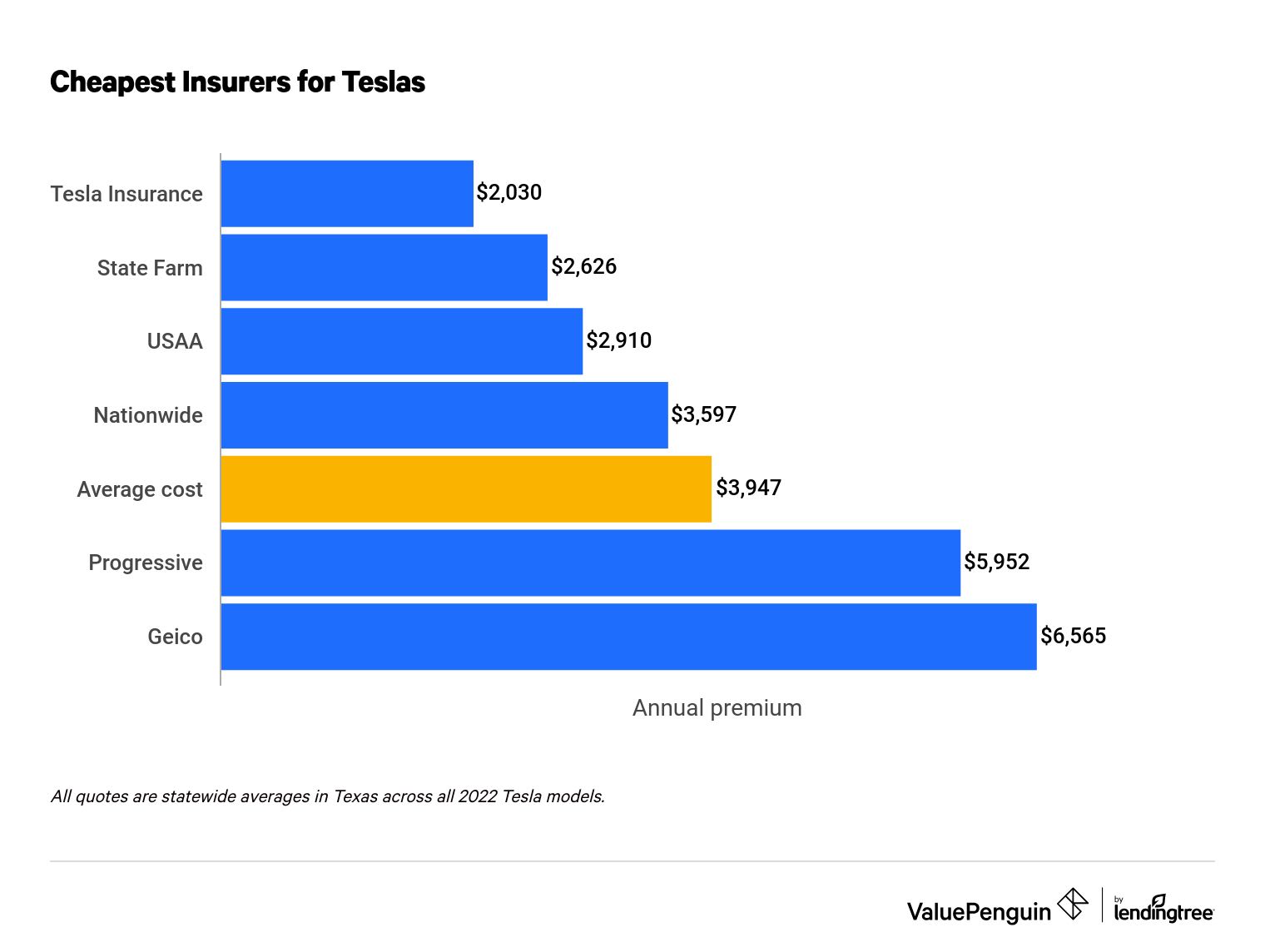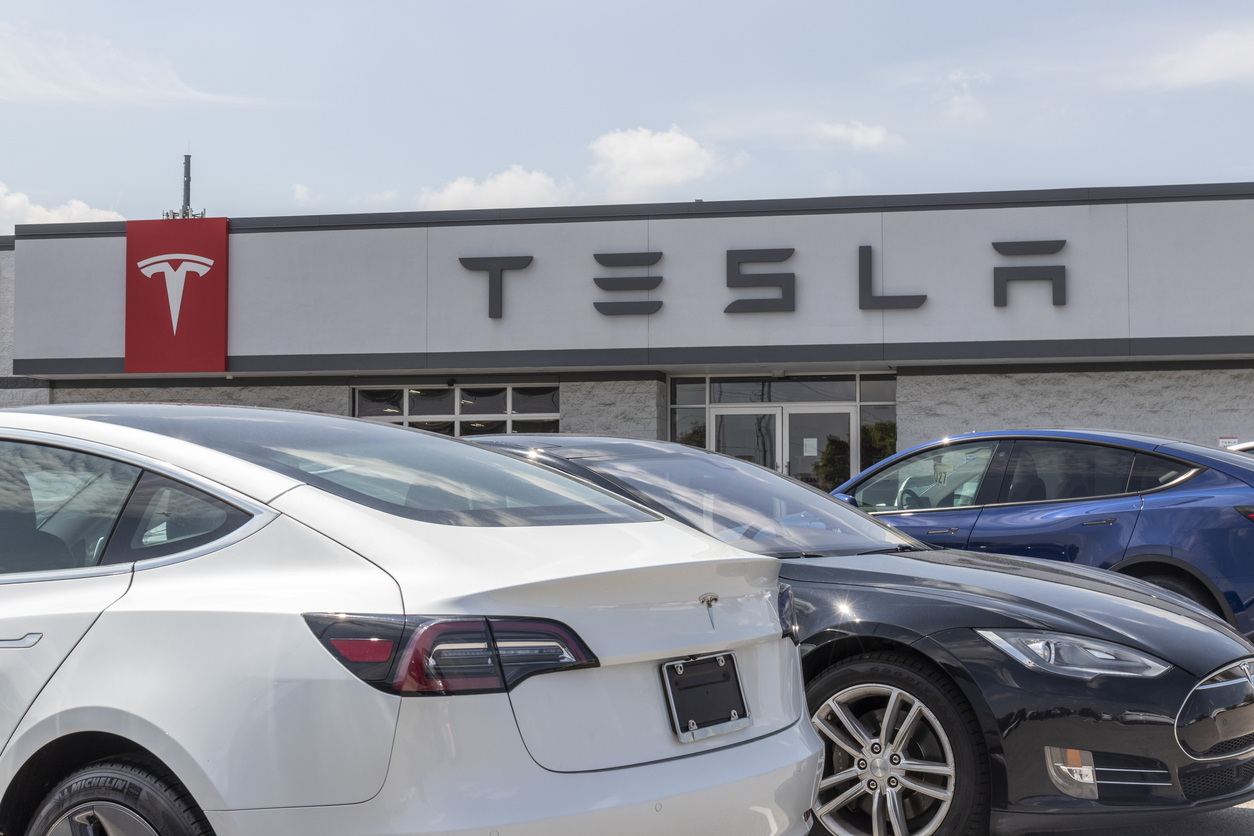Comprehensive Car Insurance for Tesla Owners

Comprehensive car insurance for Tesla owners presents unique challenges and opportunities. These high-performance electric vehicles, with their advanced technology and high repair costs, require a nuanced approach to insurance coverage. This guide explores the specific insurance needs of Tesla owners, comparing standard policies with specialized options, and helping you navigate the complexities of securing the right protection for your investment.
From understanding the impact of Autopilot features on premiums to selecting the best coverage for battery issues and software malfunctions, we’ll delve into the factors influencing your insurance costs and help you find the best value. We’ll also guide you through the claims process, offering practical advice on navigating potential incidents and ensuring a smooth resolution. Ultimately, our goal is to equip you with the knowledge to make informed decisions about your Tesla’s insurance.
Table of Contents
ToggleTesla Insurance Coverage Needs
Owning a Tesla presents unique insurance challenges due to its high value, advanced technology, and potential for costly repairs. Understanding these specific needs is crucial for securing adequate coverage.
Unique Risks Associated with Tesla Ownership
Tesla ownership introduces several risks not typically associated with traditional vehicles. The advanced driver-assistance systems (ADAS), like Autopilot, while enhancing safety in many situations, also present potential liability concerns in the event of an accident. High repair costs, particularly for battery replacements or complex technological repairs, are another significant factor. Furthermore, the sophisticated technology in Teslas creates potential vulnerabilities to cyberattacks and software malfunctions, requiring specialized coverage.
Comparison of Standard and Specialized Tesla Insurance
Standard car insurance policies may not fully address the unique risks associated with Tesla vehicles. Specialized Tesla insurance offerings, often provided by Tesla itself or select insurers, are designed to provide comprehensive coverage for these specific vulnerabilities. These specialized policies typically include higher coverage limits for liability and collision, and may also incorporate coverage for battery issues, software malfunctions, and cyber security threats.
Liability Coverage for Tesla Owners
Given the high value of Teslas and the potential for significant damage in accidents, robust liability coverage is paramount. Liability insurance protects Tesla owners from financial responsibility for injuries or property damage caused to others in an accident. Higher liability limits are advisable to adequately cover potential claims, considering the potential severity of damages involving a high-performance electric vehicle.
Benefits of Comprehensive Coverage for Teslas
Comprehensive coverage extends beyond liability, protecting your Tesla against various perils. This is particularly important given the potential for costly repairs related to battery issues, software malfunctions, and ADAS-related incidents. Comprehensive coverage can help mitigate the financial burden associated with these expensive repairs or replacements.
Comparison of Tesla Insurance Coverage Options
The following table compares coverage options from different insurers for Tesla vehicles. Note that prices and features can vary based on location, driving history, and other factors.
| Insurer | Coverage Type | Price Range (Annual) | Key Features |
|---|---|---|---|
| Tesla Insurance | Comprehensive | $1500 – $3000 | High liability limits, battery coverage, software malfunction coverage, roadside assistance |
| Company A | Comprehensive | $1200 – $2500 | Competitive pricing, good customer service, 24/7 roadside assistance |
| Company B | Comprehensive | $1800 – $3500 | Extensive coverage options, specialized Tesla expertise, accident forgiveness |
| Company C | Comprehensive | $1000 – $2200 | Bundling discounts, flexible payment options, online claims management |
Factors Affecting Tesla Insurance Premiums
Several factors influence the cost of Tesla insurance premiums. Understanding these factors can help you secure the best possible rate.
Impact of Tesla’s Safety Features on Premiums
Tesla’s advanced safety features, including Autopilot and advanced driver-assistance systems, can positively influence insurance premiums. Insurers often recognize the reduced accident risk associated with these features, potentially leading to lower premiums for drivers with a good driving record. However, the presence of these features doesn’t guarantee lower rates; individual driving behavior still plays a significant role.
Influence of Driver Demographics on Insurance Costs
Driver demographics, such as age and driving history, significantly impact insurance premiums. Younger drivers with limited driving experience typically face higher premiums due to a statistically higher risk of accidents. A clean driving record with no accidents or violations will generally result in lower premiums compared to drivers with a history of accidents or traffic violations.
Impact of Location on Tesla Insurance Pricing
Geographic location plays a crucial role in determining insurance costs. Areas with higher rates of theft or more frequent accidents will typically result in higher premiums. Insurers consider the risk profile of different regions when setting rates, reflecting the likelihood of claims in those areas.
Effect of Driving Habits on Premium Costs
Driving habits, including mileage and speed, directly affect insurance premiums. Drivers who accumulate high mileage annually generally pay higher premiums due to increased exposure to accidents. Similarly, drivers with a history of speeding tickets or aggressive driving behaviors will likely face higher premiums.
Flowchart Illustrating Factors Influencing Tesla Insurance Premiums, Comprehensive car insurance for Tesla owners
The following flowchart illustrates the key factors insurers consider when calculating Tesla insurance premiums:
(A descriptive illustration of a flowchart would go here. It would show a branching process starting with “Vehicle Information” (Tesla Model, Year), then branching to “Driver Information” (Age, Driving History, Location), then to “Driving Habits” (Mileage, Speeding Tickets), and finally converging to “Premium Calculation”.)
Finding the Right Tesla Insurance Policy
Choosing the right Tesla insurance policy requires careful consideration of various factors. A systematic approach can help you secure optimal coverage at a competitive price.
Tesla Insurance vs. Third-Party Insurers
Tesla offers its own insurance program, while numerous third-party insurers also provide coverage for Tesla vehicles. Tesla insurance may offer benefits like seamless integration with the vehicle’s systems, but it’s essential to compare rates and coverage options from both Tesla and reputable third-party insurers to find the best fit.
Key Features to Consider When Selecting a Tesla Insurance Policy
When selecting a comprehensive insurance policy for a Tesla, consider the following key features:
- Liability coverage limits
- Collision and comprehensive coverage
- Battery and software malfunction coverage
- Roadside assistance specifically for electric vehicles
- Rental car reimbursement
- Cybersecurity coverage
Obtaining Quotes from Multiple Insurers
To find the best value, obtain quotes from multiple insurers. Use online comparison tools or contact insurers directly to receive personalized quotes based on your specific needs and risk profile. Compare not only the price but also the scope of coverage offered by each insurer.
Understanding Policy Documents and Crucial Coverage Details
Carefully review policy documents to understand the specific coverage details, exclusions, and limitations. Pay close attention to the definitions of covered events, deductibles, and claim procedures. Don’t hesitate to contact the insurer to clarify any ambiguities or uncertainties.
Questions to Ask Insurance Providers
Before purchasing a policy, ask the following questions:
- What are the specific coverages for battery damage and software malfunctions?
- What is the process for filing a claim, particularly for incidents involving Autopilot?
- What are the deductibles for different types of claims?
- What is the process for roadside assistance?
- What is the insurer’s experience with Tesla vehicles?
Understanding Claims Processes for Tesla Vehicles: Comprehensive Car Insurance For Tesla Owners
Filing a claim for a Tesla requires understanding the specific procedures for different types of incidents. Proper documentation and communication are crucial for a smooth claims process.
Steps Involved in Filing a Tesla Claim
The process typically involves reporting the incident to the insurer, providing necessary documentation (police report, photos, etc.), and cooperating with the insurer’s investigation. Battery repair or replacement may involve specialized procedures and potentially longer processing times due to the complexity of the technology.
Handling Claims Related to Autopilot Incidents or Software Malfunctions
Claims involving Autopilot or software malfunctions may require detailed investigation to determine the cause of the incident and the extent of the insurer’s liability. Data logs from the vehicle may play a crucial role in these investigations.
Examples of Situations Where Comprehensive Coverage is Crucial
Comprehensive coverage is particularly important in scenarios such as battery failure, damage from a software malfunction causing an accident, or damage from a cyberattack compromising the vehicle’s systems. These situations can lead to substantial repair costs that may exceed the coverage of a basic policy.
Best Practices for Documenting Incidents and Communicating with Insurers
After an accident, promptly document the incident by taking photos, obtaining witness statements, and reporting the incident to the authorities. Maintain clear and consistent communication with your insurer throughout the claims process.
Typical Timeframe for Claim Processing and Resolution
The timeframe for claim processing and resolution varies depending on the complexity of the incident and the availability of necessary information and parts. Simple claims may be resolved relatively quickly, while complex claims involving extensive damage or technological issues may take longer.
Additional Coverage Considerations for Tesla Owners

Source: cloudinary.com
Beyond standard coverage, certain add-ons can provide valuable protection for Tesla owners.
Need for Gap Insurance for Teslas

Source: keymedia.com
Gap insurance covers the difference between the actual cash value of your Tesla and the outstanding loan amount in case of a total loss. This is particularly relevant for Teslas due to their rapid depreciation.
Value of EV-Specific Roadside Assistance
Roadside assistance tailored to electric vehicles is crucial for Tesla owners. This specialized service addresses unique needs such as battery charging assistance, towing to specialized repair facilities, and handling of electrical system issues.
Relevant Add-on Coverages for Tesla Owners
Cybersecurity coverage is a valuable add-on, protecting against data breaches and unauthorized access to your vehicle’s systems. Consider additional coverage for loss of use, covering expenses incurred due to your vehicle being unavailable after an accident.
Illustrative Examples of Tesla Damage and Coverage
Consider these examples: A minor fender bender might be covered under collision, while a battery fire would require comprehensive coverage. A software malfunction leading to an accident would likely fall under comprehensive coverage, depending on the policy terms. Damage from a cyberattack might require specialized cybersecurity coverage. The severity and type of damage will determine which coverage is necessary.
Final Thoughts
Securing comprehensive car insurance for your Tesla involves careful consideration of various factors, from your driving habits and location to the specific features of your vehicle and the coverage offered by different insurers. By understanding the unique risks associated with Tesla ownership and comparing various policy options, you can confidently choose a plan that provides the necessary protection while offering the best value.
Remember to proactively ask questions, document incidents thoroughly, and maintain open communication with your insurer to ensure a smooth and efficient claims process should the need arise.
General Inquiries
What is the average cost of comprehensive insurance for a Tesla?
The cost varies significantly depending on factors like your location, driving history, model of Tesla, and the level of coverage chosen. It’s best to obtain quotes from multiple insurers for an accurate estimate.
Does my Tesla’s Autopilot feature affect my insurance premium?
Yes, the presence of Autopilot can influence your premium. Some insurers may offer discounts for advanced safety features, while others might charge more due to the perceived increased risk associated with autonomous driving technologies.
What should I do if I’m involved in an accident involving my Tesla’s Autopilot?
Immediately contact emergency services and your insurer. Gather as much information as possible, including photos and witness statements. Cooperate fully with the investigation and follow your insurer’s instructions regarding the claims process.
Can I get roadside assistance specifically for my Tesla’s electric components?
Yes, many insurers offer roadside assistance packages tailored to electric vehicles, including services for battery issues, charging problems, and towing to specialized repair facilities.